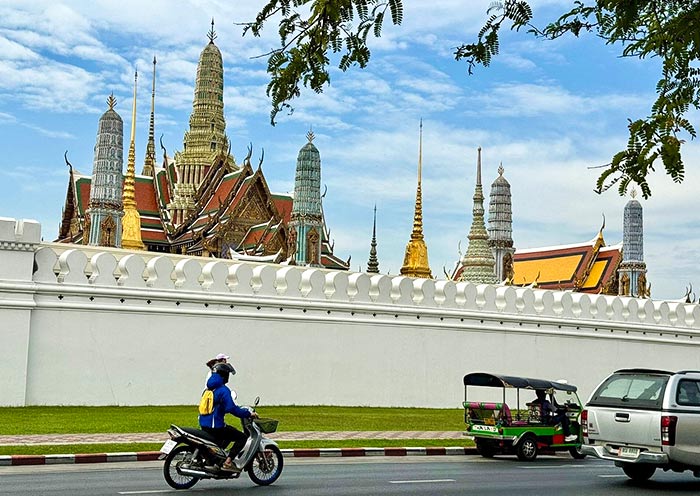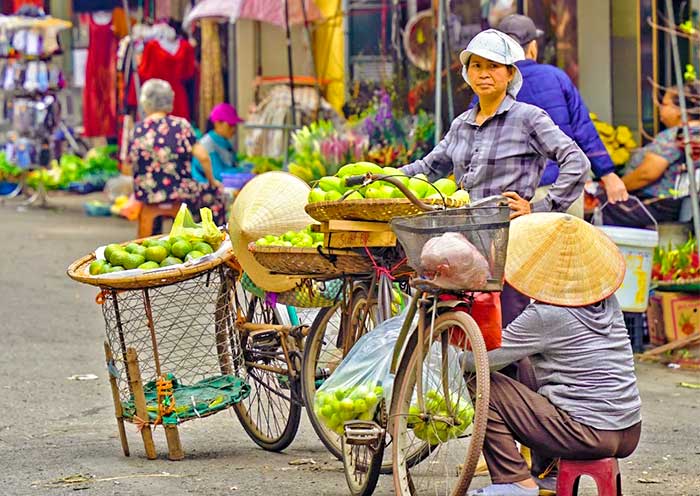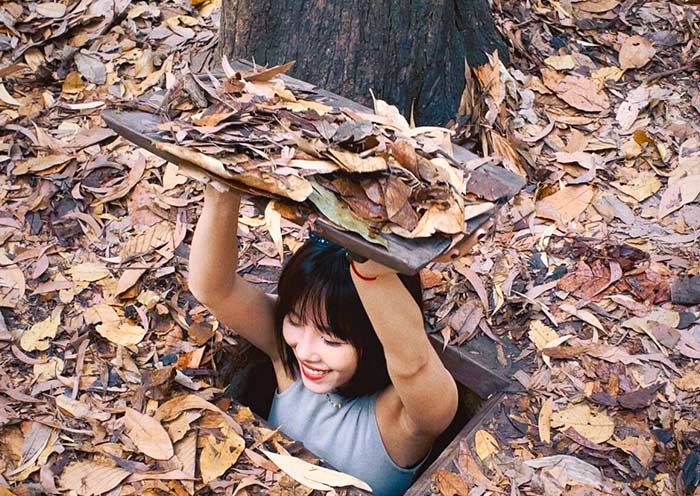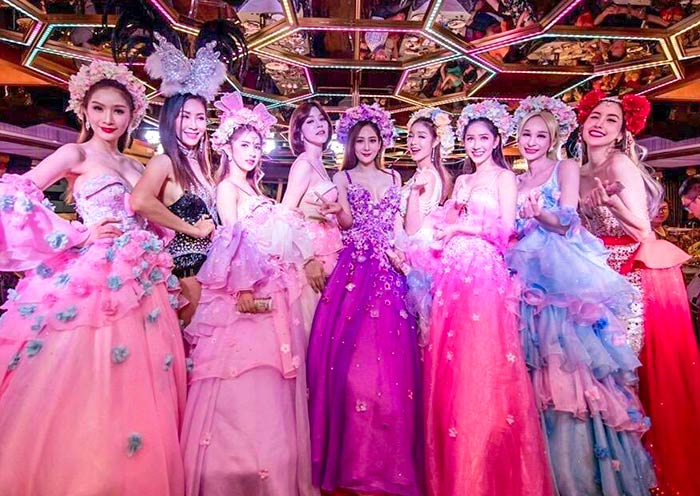We traveled with 7 lady friends. Our trip with Asia Odyssey Travel was so well planned, and seamless. Our time in Bhutan was exceptional, being led by Ugyan and Doji. What two very wonderful men. They were both so very knowledgeable, kind, and helpful. I cannot say enough good about our time in Bhutan with these two good men,...our guide and driver. Thank you Asia OdysseyTravel!!! p.s. Our trip was planned by Tony of Asia Odyssey. He was amazingly helpful, and planned our trip flawlessly! Thank you, Tony!
9 Days Classic Thailand Vietnam Tour Package with Bangkok, Chiang Mai, Ho Chi Minh & Hanoi
- Highlights
- Itinerary
- Price
- Trip Notes
- Accommodation
- Photos
- Reviews
Glimpse of Thailand and Vietnam - Explore the Top Tourist Cities in Southeast Asia
Plan an affordable tour to Southeast Asia with limited vacation days? Take our 9 Days Classic Thailand Vietnam Tour Package with Bangkok, Chiang Mai, Ho Chi Minh City (Saigon) & Hanoi, which includes the Top Tourist Cities in Southeast Asia.
You will get a Glimpse of Thailand and Vietnam, focusing on must-see destinations, ensuring you don't miss the iconic landmarks like Bangkok's Grand Palace & Wat Pho, Chiang Mai's Temples & Elephants, Ho Chi Minh City's Cu Chi Tunnels & Reunification Palace, Hanoi's Old Quarter & Ho Chi Minh Mausoleum, and World Heritage Site of Halong Bay (Halong Bay Cruise).
With our Classic Thailand Vietnam Tour Package in just 9 days, you'll hit some of Southeast Asia's most popular cities, allowing to experience the distinct flavors of Thailand and Vietnam.
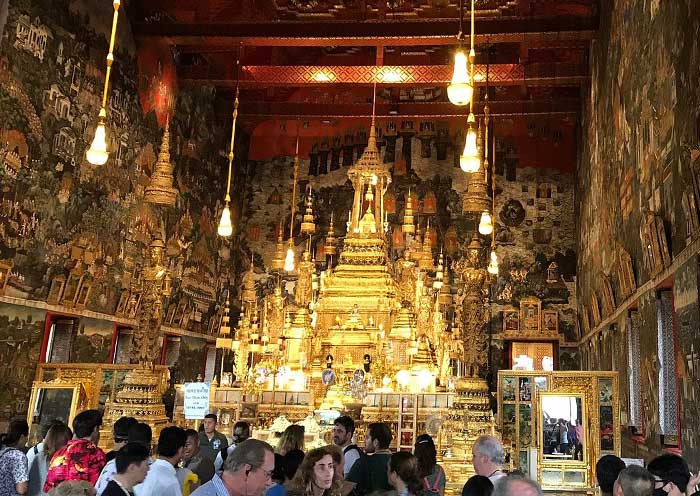
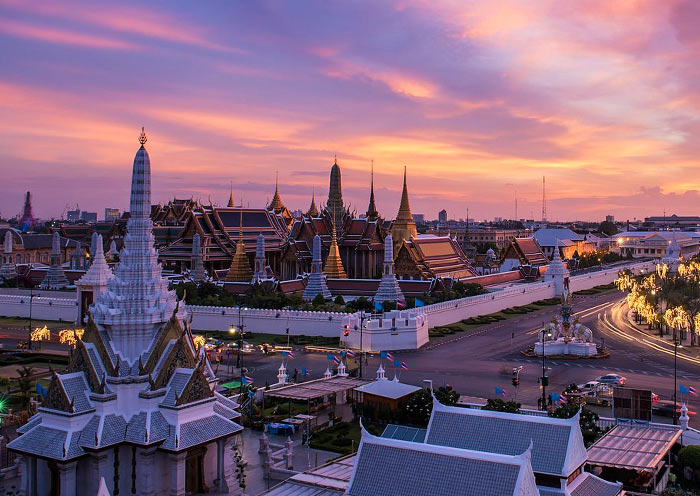



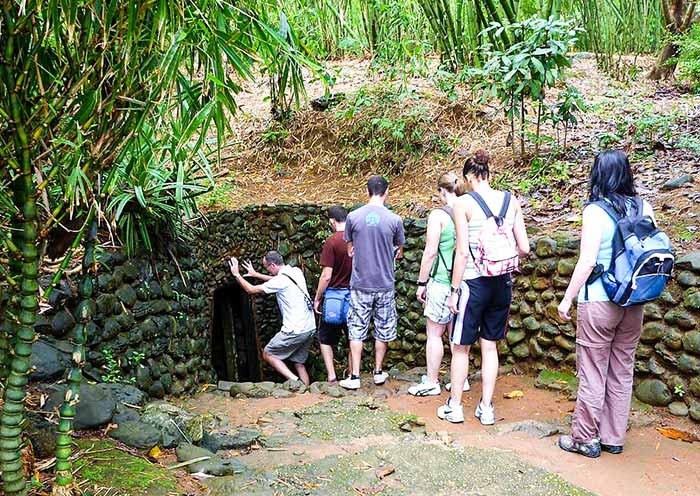
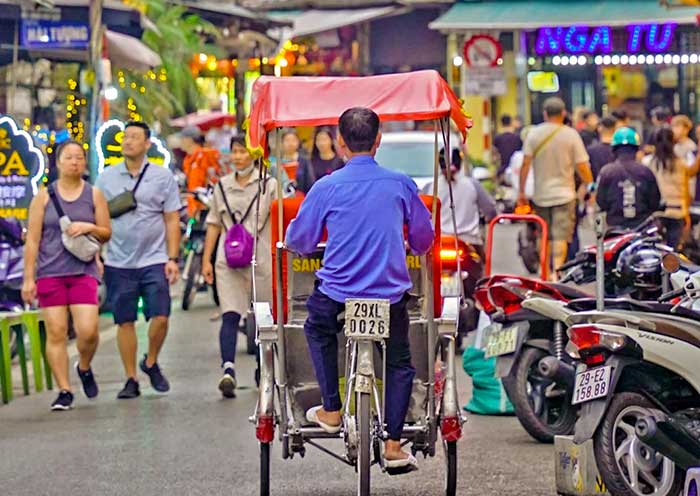

Itinerary at a Glance
Bangkok (2 Days)
Wat Phra Kaew, Grand Palace, Wat Pho, Chinatown, Wat Arun
Chiang Mai (2 Days)
Elephant Jungle Sanctuary, Chiang Mai Cooking Class (Optional), Chiang Mai Old City (Optional), Tha Phae Gate, Wat Phra Singh, Wat Chedi Luang
Chiang Mai to Ho Chi Minh City (0.5 Day)
Depart Chiang Mai to Ho Chi Minh City
Ho Chi Minh City (1 Day)
War Remnants Museum, Reunification Palace, Central Post Office, Nha Tho Tan Dinh, Cu Chi Tunnels, Jade Emperor Pagoda
Ho Chi Minh City - Hanoi (0.5 Day)
Fly to Hanoi from Ho Chi Minh City
Hanoi (1 Day)
Free time Optional: Tran Quoc Pagoda, Ho Chi Minh Mausoleum, One Pillar Pagoda, Temple of Literature, Vietnam National Museum of History, Hoan Kiem Lake, cyclo tour to old quarter, Water Puppet Show
Halong Bay (2 Days)
Halong Bay, Halong Bay Cruise, Visit Sung Sot Cave, Titop Island, Trinh Nu Cave
Itinerary Day by Day
Sawatdee Krap/Kha! Welcome to Bangkok, the capital city of Thailand! Upon your arrival at the airport in Bangkok, the tour guide and driver will meet you at the exit and then escort you to the hotel in downtown Bangkok. You can have a good rest in your hotel and get ready to explore Bangkok with your guide the next day.
Bangkok means the "City of Angels" in translation from its ceremonial Thai name, Krung Thep Maha Nakhon. It is a vibrant metropolis known for its bustling markets, ornate temples, and delicious Thailand street food. You can indulge in Bangkok's diverse culinary scene, from street eats to upscale dining. Shop till you drop in luxury malls or explore local markets. Enjoy the city's lively nightlife, rooftop bars, and live music venues. Bangkok offers a blend of tradition and modernity, making it an exciting and captivating destination.
Free Time Ideas:
1. You can watch a Thailand boxing game at Rajadamnern Stadium.
2. Unwind with a traditional Thai massage or spa treatment.
Arrival Ideas:
Bangkok, the capital city of Thailand, serves as a significant international hub with direct flights from various cities worldwide. Major cities offering direct flights to Bangkok include London, Dubai, Singapore, Kuala Lumpur, Ho Chi Minh City, Doha, Taipei, Hong Kong, Frankfurt, Paris, Helsinki, Beijing, New York, Los Angeles, Tokyo, and Sydney. Many cities in Thailand, such as Chiang Mai (Chiang Mai International Airport), Phuket (Phuket International Airport), Krabi (Krabi International Airport), and Koh Samui (Samui International Airport ), also have direct flights to Bangkok's main airports, Suvarnabhumi Airport (BKK) and Don Mueang International Airport (DMK). Flight availability and routes can vary based on airlines, seasons, and other factors. It is recommended to consult airlines or our travel consultant for the most up-to-date information regarding direct flights to Bangkok from your specific location.
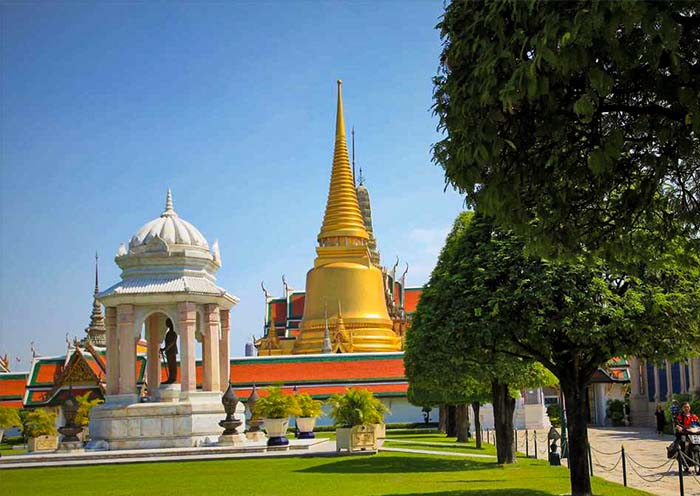

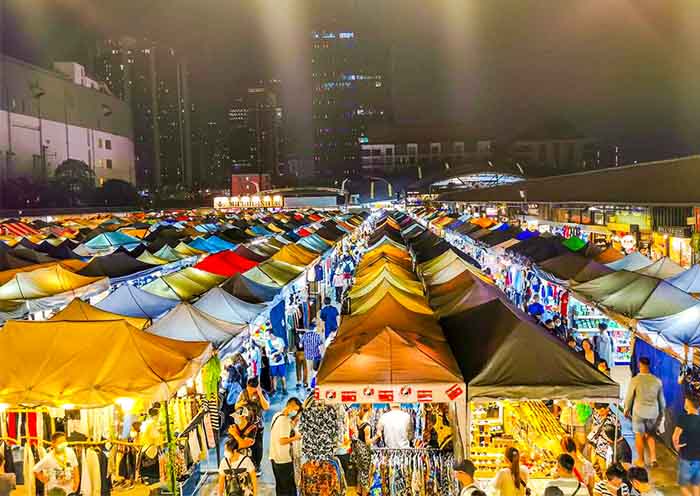
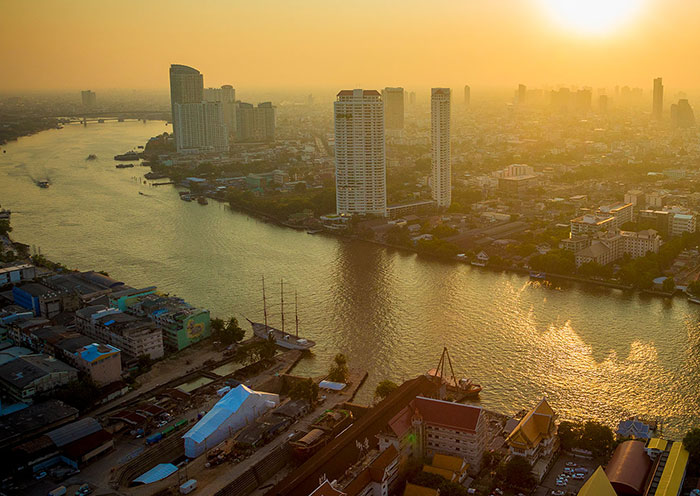
Today, you will explore the Top 5 must-visit places in Bangkok: Wat Phra Kaew, Grand Palace, Wat Pho, Wat Arun, and Chinatown. You see “Wat” means “Temple” in Thai language. You will also experience a Thai tuk-tuk, take a ferry or boat ride on the Chao Phraya River, and indulge in local food in Chinatown. This is a classic Bangkok trip, allowing you to witness 2 of the three treasures of Thailand: the jade Buddha and the reclining Buddha.
In the morning, head to Wat Phra Kaew which was built in 1782 and is located in the northeast corner of the Grand Palace in Bangkok. Covering one-fourth of the Grand Palace's area, Wat Phra Kaew is the most famous royal Buddhist temple in Thailand. This temple is renowned for enshrining one of three national treasures of Thailand, the Emerald Buddha, which is carved from a single block of Emerald. Each year, the Thailand King personally changes the Buddha's robes according to Thailand's three unique seasons. Each season changes with a certain robe: a gold robe embedded with rubies for the hot season, a gold robe embedded with sapphires for the rainy season, and a pure gold robe for the cool season. Don’t forget to check which robe the Emerald Buddha wears when you are there.
On the walls surrounding the cloisters of Wat Phra Kaew, there are a total of 178 murals (1,000m in length). Painted during the reign of King Rama I, the first monarch of the Chakri Dynasty in 18th-century Thailand (Bangkok Dynasty), the murals depict scenes from the Indian mythological epic "Ramayana," which narrates the story of King Rama joining forces with the monkey deity Hanuman to defeat the demon king Ravana and rescue the exquisite princess Sita. It is said that the story of the "Journey to the West" is also based on this legend. All the murals were created by royal court painters and the golden pigments used were made entirely from gold, resulting in exquisite and unparalleled artwork.
With the guidance of your tour guide, you can learn about the mythical creatures within Thai Buddhist architecture. For example, there is the Garuda, a mythical bird and guardian deity of Buddhism, perched on the rooftops. At the entrance of the temple, you'll find Yaksa, a protective deity, and outside the halls, there are statues of Kinaree, a mythical half-bird, half-human creature. The base of the pagoda is adorned with statues of Hanuman, the monkey deity.
After visiting Wat Phra Kaew, you can go on a visit around the Grand Palace. The Grand Palace, which was first established in 1782, was constructed as a replica of the old palace in the former capital city of Ayutthaya. It serves as a symbol of the Bangkok Dynasty and is the most well-preserved, largest, and most distinctive palace in Thailand. The Grand Palace is currently used for coronation ceremonies, royal celebrations, and hosting foreign dignitaries. From King Rama I to King Rama VIII, all the monarchs of the Bangkok Dynasty resided in the Grand Palace. However, after an assassination incident in 1946 involving King Rama VIII, King Rama IX moved to a new residence. The Bangkok Dynasty has continued to the present day, with the current monarch being King Rama X.
The Grand Palace complex consists of 22 buildings and is elegantly situated along the banks of the Chao Phraya River. The main structures are four distinct palaces (Borombhiman Hall, Amarindra Hall, Chakri Mahaprasat, Dusit Hall), showcasing the essence of Thai architecture, painting, sculpture, and interior decoration. It is often referred to as the "Encyclopedia of Thai Art". By the way, the Thai King is considered the incarnation of the god Vishnu, and Garuda is Vishnu's guardian. As a result, sculptures of the Garuda (stepping on 2 serpents) can be found on door lintels, eaves, and walls, with a total count exceeding several hundred. Witnessing the changing of the guards' ceremony is a bonus when visiting the Grand Palace.
Then, visit Wat Pho (Temple of the Reclining Buddha) which is a 10-minute walk from the Grand Palace. As the oldest and largest temple in Bangkok, Wat Pho houses the largest reclining Buddha and the highest number of Buddha images and stupas in the city. The reclining Buddha, one of three national treasures of Thailand, is 46 meters tall and 108 meters long, depicting the scene of the Nirvana of Gautama Buddha. Within the temple grounds, there is a Bodhi tree, believed to be the spot where the Buddha meditated. The temple is adorned with about 100 stupas, with the most magnificent being the four stupas which are decorated with blue, white, yellow, and green ceramic tiles. In the courtyard, you can also see many Chinese-style stone sculptures, such as door guardians and lions, which were traditionally used on ships for ballast and protection against evil spirits.
Wat Pho is regarded as Thailand's first university and is considered the birthplace of Thai medicine and traditional Thai massage. It still houses a private school established in 1957 that teaches traditional Thai medicine and offers authentic Thai massages (optional, self-pay).
In the afternoon, take a ferry or boat (cruise; optional) on the Chao Phraya River to view Wat Arun (outside view). The Chao Phraya River divides Bangkok into two parts, and many famous temples are concentrated along its banks. The Wat Arun, is one of the most prominent temples that stands on the river's edge, complementing the Grand Palace on the opposite side. (Note: Due to the hot weather and the presence of numerous steps at Wat Arun, many of our guests opt to take a boat trip and enjoy the view of Wat Arun from the outside, either from the boat itself or from the opposite side.)
Built in 1809, Wat Arun was established to honor King Taksin (郑信), the 41st monarch of Thailand (1767-1782) and a national hero. During the invasion of the Burmese army, King Taksin led the Thai people in a brave resistance, successfully driving out the Burmese and establishing the Thonburi Kingdom. To commemorate this Chinese-Thai king (from Guangdong), the temple was named Wat Arun, meaning "Temple of Dawn", as the battle took place at dawn. The main stupa of the temple stands at a height of 79 meters and is often referred to as the Thai version of the Eiffel Tower. In contrast to many other magnificent temples adorned with gold, Wat Arun stands out with its elegant white structure, attracting numerous visitors who come to rent traditional Thai costumes for photography. Situated by the Chao Phraya River, Wat Arun (Temple of Dawn) also offers a captivating view of the sunset, which is another reason why people flock to this location.
In the evening, take a Thai tuk-tuk to Chinatown Bangkok for dinner. Chinatown Bangkok (Yaowarat) is renowned as one of Bangkok's liveliest and most bustling commercial areas, with reportedly 70% of the city's gold shops located in Chinatown. The entire street of Chinatown stretches for about 2 km, lined with numerous shops, and thousands of businesses proudly displaying eye-catching Chinese signs. You may have watched the film Detective Chinatown, which was filmed in Chinatown Bangkok which has a history of over 200 years. You can search for the hidden shops that appeared in the film while enjoying the food in Chinatown, a haven for foodies. The restaurants and food stalls here provide a rich selection of Chinese, Thai, and other Asian delicacies. From classic pad thai to exotic grilled meats, there's something for everyone.
Warm Tips:
1.When entering the Grand Palace or temples, it is prohibited to wear shorts or skirts that do not cover the knees. Shoulders and midriffs should be covered, and clothing should not be excessively tight or have holes.
2.Upon entering a temple, remove your hat and shoes. Photography is prohibited inside the temple halls. The use of drones is strictly prohibited within the royal grounds.
3.Do not enter unauthorized areas or areas marked with warning signs. Unauthorized photography or videography is prohibited in restricted areas.
4.The lights of Wat Arun usually turn on around 7 PM. For sunset, it is recommended to arrive Wat Arun around 5:30 PM, do double check with your guide for the sunset time based on your travel schedule.It is said that the best spot to capture the beauty of Wat Arun is in the alley across from Wat Pho, where a restaurant is located.
5.Opening Hours for Temples (Wat):
Wat Phra Kaew : 8:30 AM - 3:30 PM
Wat Pho: 8:00 AM - 6:30 PM
Wat Arun : 8:00 AM - 6:00 PM

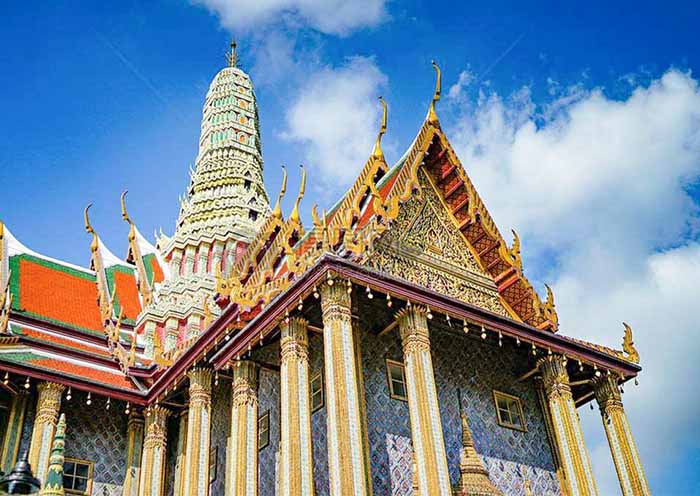

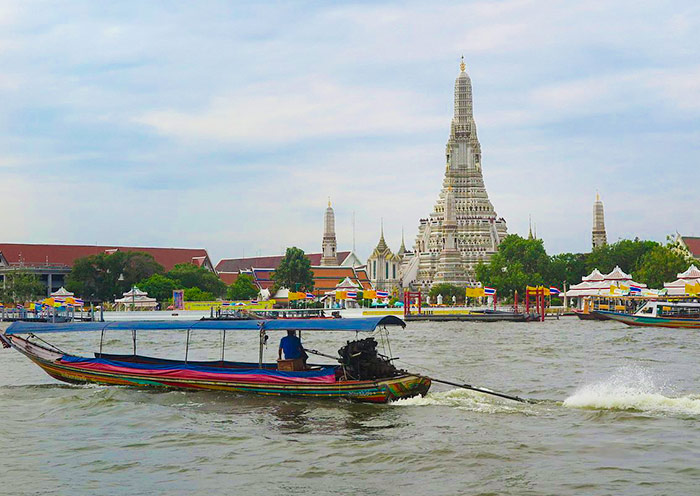
This morning,you will have some free time in Bangkok and explore more on your own till your guide or driver escorts you to the airport for your flight to Chiang Mai.
If you like you can take a morning tuk-tuk ride to visit Pak Khlong Talat Flower Market (optional), also known as Bangkok Flower Market, which is one of the top 9 flower markets in the world. This Flower Market is a must-visit destination for a sensory feast. This vibrant market immerses you in a kaleidoscope of colors and fragrances, offering an unforgettable experience. Beyond flowers, the market offers glimpses of local life, with lively activity and bustling vendors. Open 24/7, it accommodates all schedules, allowing early risers and night owls to indulge in its charm. Capture unique photos amidst the vibrant displays, and explore stalls selling fruits, vegetables, and floral supplies.
Then, head to airport for your flight to Chiang Mai (1h15m). The Chiang Mai Airport is only 3km away from the Chiang Mai Ancient City. Check-in at your hotel in Chiang Mai and have a good rest.
Chiang Mai is the second largest city in Thailand and was the capital of the independent Lanna Kingdom until 1558, the first kingdom in Thai history. It is renowned for its rich history, numerous temples, and unique culture. Chiang Mai is also known as the "Rose of the North" and offers a slower pace of life. People from all over the world flood here to get close to elephants through various Elephant Sanctuaries, experience local life through Thai Cooking Classes, and enjoy a vibrant atmosphere through its Walking Street Market and Night Bazaars around Chiang Mai Old City.
If time permit, you can spaned Half day Citywalk in Chiang Mai Old City (Optional) to explore Chiang Mai’s stunning Temples (Wat Phra Singh, Wat Chedi Luang, Wat Phan Tao), vibrant culture, and a laid-back atmosphere. It's a place for Architecture and culture lover. After your Chiang Mai trip, you may understand why Chiang Mai was Teresa Teng's (邓丽君) favorite city.
For the Half day Chiang Mai Old City tour (Optional), you will enter Chiang Mai Old City by the Tha Phae Gate, which is the landmark of Chiang Mai. The Old City is a square measuring 1.5 kilometers in length and 1.5 kilometers in width, surrounded by a moat. It is the most complete and well-preserved city gate, constructed in the early 13th century, remaining from the ancient walls that once surrounded the Old City. It served as a defensive structure against invaders and a gateway to the Lanna Kingdom. The area around the gate is always bustling with activity, especially during festivals like Loy Krathong and Yee Peng Lantern Festival (Sky Lantern Festival; Nov. or Dec.).
There are around 30 temples within the Chiang Mai Old City walls today. You will visit Wat Phra Singh, one of the three major temples in Chiang Mai, is the largest and most revered temple in the ancient city. It was originally built in 1345 when the fifth king of the Mangrai dynasty constructed a stupa to enshrine his father's ashes. Over time, it was expanded to its present scale. The temple, named after a famous Buddha image called Phra Singh (Lion Buddha), showcases stunning Lanna architecture, a unique blend of Thai, Burmese, and Mon styles. In the center of the temple stands a large golden pagoda, approximately 20 meters high, built in the 16th century, which is said to house the relics of Gautama Buddha. Wat Phra Singh is also one of the main locations for locals to celebrate the Songkran Festival (held annually from April 13th to 15th, Thai New Year).
Then, visit Wat Chedi Luang (Temple of the Big Stupa) which was located at the center of Chiang Mai Old City. The temple has a history of over 600 years and holds the same esteemed status as Wat Phra Singh, making it one of the three major temples in Chiang Mai. The centerpiece of the temple is the Lanna-style square-shaped great stupa, originally standing at a height of 98 meters, which was once the tallest structure in northern Thailand. It was built by King Saen Muang Ma of the Lanna Kingdom in 1411 AD. Throughout history, it has endured wars, and earthquakes, leaving only the 42-meter-high base and the ground level, bearing witness to the storied and profound history of Chiang Mai. Currently, new Buddha images have been placed on the four sides of the great stupa. On the southern wall, there are six elephant sculptures, with five of them being replicas restored with cement, and only the rightmost one being the original piece that has been preserved. It is worth seeing.
Later, hop to Wat Pun Tao which is 100 meters away from Wat Chedi Luang. Wat Phan Tao, also known as the Teakwood Temple, is entirely constructed from teakwood provided by the royal family. With a pure Lanna-style design, built in the late 1870s, making it a treasured sanctuary within the city of Chiang Mai. It is also one of the few remaining wooden structures in the area. Every year during the Yi Peng Lantern Festival (mid Nov., Thai Lantern Making & Releasing), Wat Phan Tao holds a lighting ceremony, attracting photographers from both domestic and international locations.
If time permit, you can visit Wat Chiang Man, the oldest temple in Chiang Mai. It is the first Buddhist temple in the ancient city and was personally supervised and built by King Mengrai, the first king of the Lanna Kingdom, in 1297.
Free Time Ideas for Chiang Mai Night Markets:
1.Chiang Mai Night Bazaar (Chang Klan Road; Everyday: 5pm-12pm)
2.Tha Pae Sunday Walking Street on Ratchadamnoen Road (1km, Sunday only, 5pm-10pm)
3.Wua Lai Walking Street on Wua Lai Road (Saturday only, 5pm-11pm)
4.Do double-check with your local guide for the market opening time.
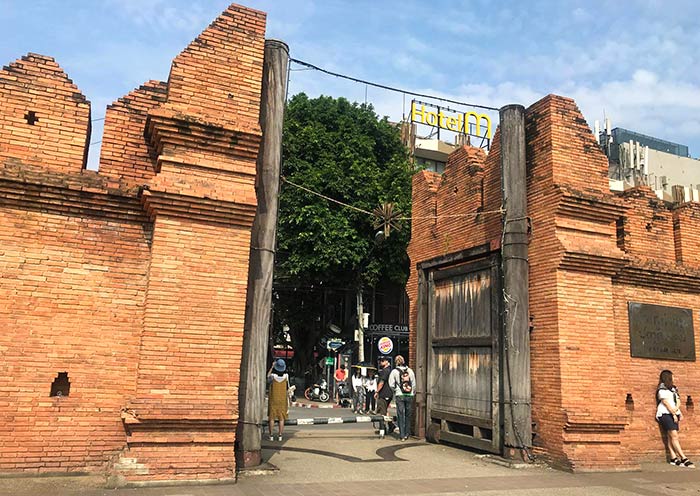



Chiang Mai is a popular destination to see elephants up close in a wide open space. Today, you will enjoy a half-day morning visit to Elephant Jungle Sanctuary. Afterward, you can freely relax for the rest of the day, perhaps by taking a Chiang Mai Cooking Class (15:30-19:00; optional) or trying out Lila Thai Massage near the Tha Pae Gate (optional). This offers a delightful opportunity to experience the real local life in Chiang Mai.
Upon arrival at the Elephant Jungle Sanctuary, savor a welcome snack while sipping tea or coffee and learning about elephants during an informative introduction. Get involved in the preparation of natural dietary supplements for the elephants before meeting these gentle giants. Feed them, administer supplements, and hear their inspiring stories while capturing memorable photos in their natural environment. Experience a unique mud spa session with the elephants, followed by a refreshing swim and shower in the specially constructed outdoor "Elephant Shower". You may even have the chance to engage in a fascinating "DIY Poop Paper" recycled paper activity.
After learning about the elephants, observe the elephants, feed the elephants, shower the elephants, enjoy a delicious lunch of traditional Thai cuisine and seasonal fruit, head back to your hotel, and enjoy your relaxing day freely. Overnight in Chiang Mai.
Warm Tips:
1.Book in advance: Elephant sanctuaries are popular attractions, so it's important to book your visit in advance, especially during peak season.
2.Wear appropriate clothing: You'll likely be doing some walking and getting muddy, so wear comfortable shoes and clothes that you don't mind getting dirty.
3.Respect the elephants: Always follow the instructions of your guide and be gentle and respectful when interacting with the elephants.
Free Time Idea around Chiang Mai Old City:
1.Half-day Thai Cooking Class in Chiang Mai: There are many Chiang Mai Cooking Schools that offer various Cooking Classes (appetizer, stir-fry, dish, soup, curry, dessert), from farm to table or from market to table, enjoy the famous Thai Dishes cooked by yourself (Thai tea, Tom Yam Soup, Pad Thai and more).
2.Try Chiang Mai Women's Correctional Institution Lila Thai Massage (Optional, self-pay). It is located near the Tha Pae Gate.
3.Foodie Experiences in Chiang Mai: Explore local markets around the Chiang Mai Ancient City such as Warorot Market (Everyday: 4am-6pm), Jing Jai Market (Everyday: 8:30am-9pm), Coconut Market (Saturday/Sunday/Monday, 8am-2pm), White Marke (Nimmanhaemin Road; 3pm-10pm; Closed on Weds & Thur.). Do double-check with your local guide for the market opening time.
Warm Tips:
1.There are many Elephant Sanctuaries in Chiang Mai, if you prefer Elephant Nature Park (Hands-off), do ask us to check if it is available, especially during the high season.
2.If you are interested in local markets or Night Bazaars, be sure to note that some markets are only open on Saturday or Sunday. Ask your guide for advice.

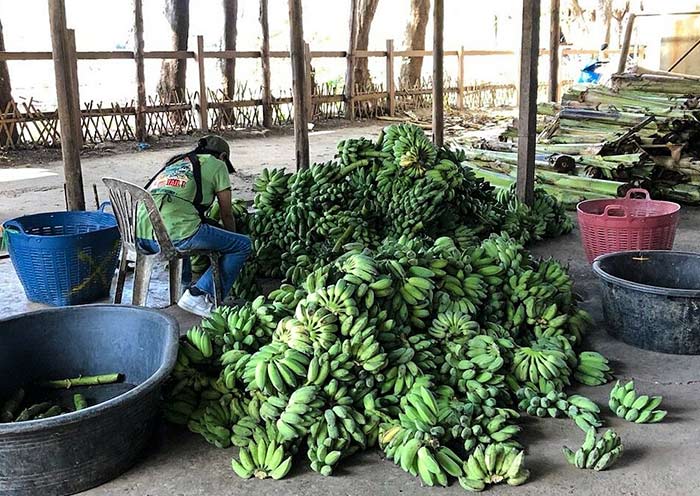
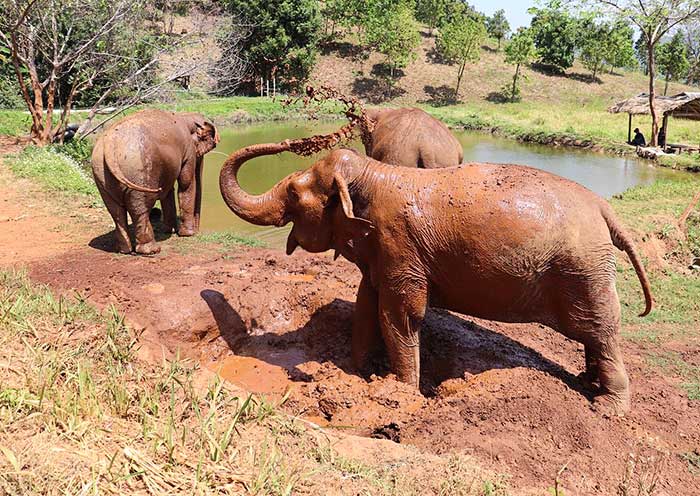

Welcome to Ho Chi Minh City! Formerly known as Saigon, Ho Chi Minh City is the largest city in Vietnam. Located in southern Vietnam, it's a well-blended mix of historical significance and modern dynamism.
Upon arrival at Tan Son Nhat International Airport in Ho Chi Minh City (approximately 6.5km from downtown), your local guide will meet you and escort you to your hotel. The rest of today is free for you to explore the city on your own.
Free Time Family Activities in Ho Chi Minh City:
Immerse yourself in Saigon's famed coffee culture at the Coffee Apartment, then be captivated by the vibrant atmosphere of Ben Thanh Market. Explore a world of local crafts, and tantalize your taste buds with the incredible array of Vietnamese street food - a sensory explosion you won't forget!


After breakfast, after a comfortable 1.5-hour drive, you will arrive at the Cu Chi Tunnels. Here, you and your family will have the opportunity to explore the intricate tunnel system, which consists of narrow passageways, hidden entrances, and underground chambers. Your guide will share insights into the daily life of the Cu Chi guerrilla fighters and their remarkable ability to survive within the tunnels. Prepare to crawl through sections of the tunnels that were used during the Vietnam War. You will see firsthand the kitchens, living quarters, and other essential spaces built underground. Additionally, you will visit weapon rooms and discover how these resourceful soldiers crafted their tools.
After the tour, return to Ho Chi Minh City for a half-day city tour to explore Ho Chi Minh City's rich history, culture, and vibrant modern life.
Our first stop is the Reunification Palace, also called the Independence Palace, a captivating architectural marvel that once served as the residence of the South Vietnamese President. Here, you can witness the iconic image of North Vietnamese tanks storming the palace gates, a defining moment that marked the end of the Vietnam War in 1975. Next, we head to the War Remnants Museum, a poignant and powerful testament to the realities of the Vietnam War. Prepare to be moved by exhibits showcasing artifacts, photographs, and weaponry that tell stories of war and resilience.
Next on your itinerary is Nha Tho Tan Dinh, also known as the Pink Church. This vibrant landmark stands out with its unique hue, making it instantly recognizable and a popular spot to capture stunning photos. Step back in time as you learn that Nha Tho Tan Dinh was built in the late 19th century, making it one of the oldest churches in Ho Chi Minh City. Admire the fascinating blend of Romanesque and Gothic styles in its architecture, with two grand bell towers flanking the entrance. Snap some cool pictures outside to remember your visit!
Afterwards, head to the Jade Emperor Pagoda, a vibrant temple dedicated to the supreme deity in Taoism, the Jade Emperor. Here, you can marvel at colorful statues, intricate carvings, and exquisite woodwork that adorn the pagoda. Then, be transported back in time at the Central Post Office, a majestic building constructed in the early 20th century. Take a moment to appreciate the impressive facade with its wrought-iron details and colorful mosaic floors. (Optional Experience: To create a lasting memory of Vietnam, send postcards to your loved ones from this historic landmark.)
Stay overnight in Ho Chi Minh City.
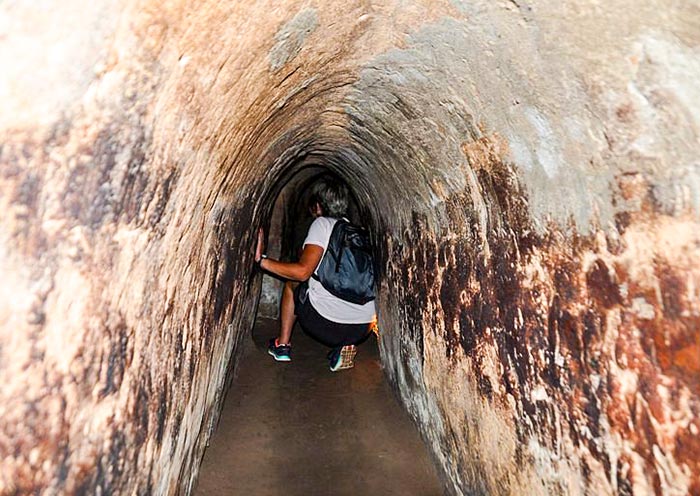
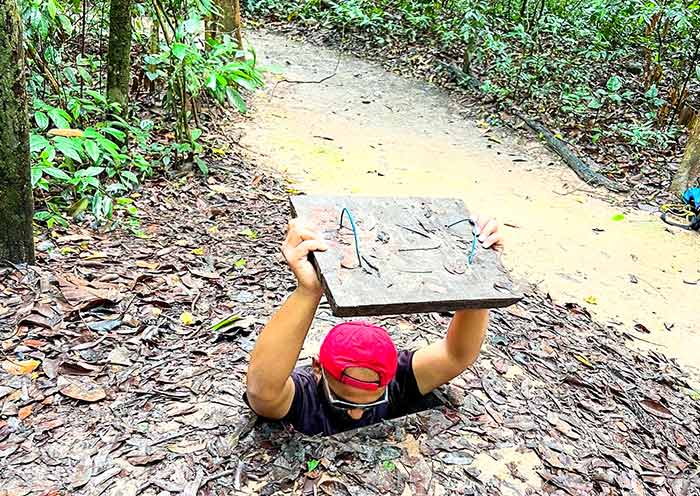


This morning, you'll be transferred from Ho Chi Minh to Hanoi by flight. Welcome to Hanoi, the capital city of Vietnam!
Hanoi, located in northern Vietnam, boasts a rich history dating back over 1,000 years. It showcases a blend of Vietnamese, Chinese, and French influences. Renowned for its diverse culinary scene, Hanoi is considered a food lover's paradise to taste Vietnamese cuisine. The city is famous for its street food, where you can savor an array of local specialties.
Upon arrival at Noi Bai International Airport, you will be met by our local guide and driver. Then, we will take you to your carefully selected hotel in Hanoi. We will assist you with check-in. The rest of today is free for you to explore this old and charming city at your own pace.
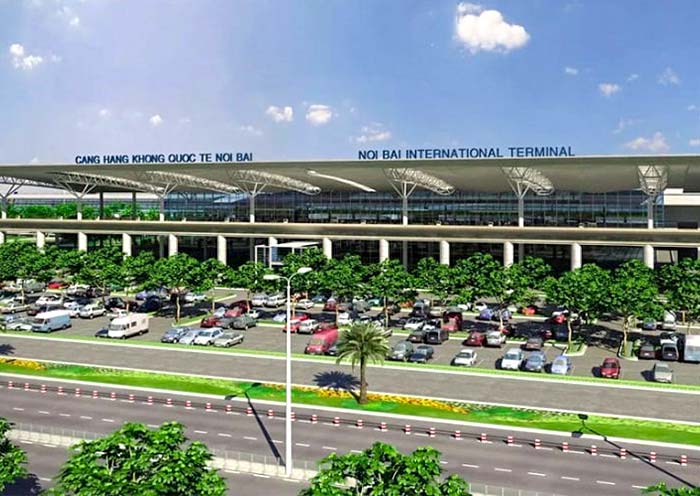

Halong Bay, A UNESCO World Heritage Site, boasts thousands of majestic limestone formations, sculpted by nature over millions of years. Reputed as “Guilin on the Sea”, these emerald islands rise dramatically from crystal-clear turquoise waters, creating a breathtaking seascape. Thanks to its dramatic cliffs, shimmering turquoise waters, and over 1,600 limestone islands and islets, Halong Bay is one of the most popular destinations in northern Vietnam. A cruise offers the best way to experience its unparalleled beauty.
Morning:
This morning, between 8:00 AM and 8:30 AM, the cruise company's shuttle bus will pick you up in Hanoi's Old Quarter area. Hop aboard and prepare to be whisked away on a scenic 2.5-hour drive (147 km) to stunning Halong Bay!
Upon arrival, you'll be warmly welcomed aboard with a refreshing drink. Following a quick safety briefing from the cruise manager, you can relax and savor a delicious lunch onboard.
Afternoon:
This afternoon, you’ll explore Halong Bay's dramatic karst landscape with your cruise! Different cruise companies offer various itineraries, but you might visit some of these fascinating spots and try water activities like kayaking, swimming, etc. Watch the sunset paint the karst mountains with colors.
- Sung Sot Cave (Surprise Cave): Discover a magnificent cave adorned with stalactites and stalagmites.
- Titop Island: Hike to the peak for breathtaking panoramic views of the bay.
- Cua Van Fishing Village: Witness the traditional way of life of local fishermen in a floating village.
- Tung Sau Pearl Farm: Learn about pearl cultivation and see these beautiful gems firsthand.
- Trinh Nu Cave (Virgin Cave): Discover a secluded cave with a unique rock formation.
Evening
This evening, indulge in a hearty dinner prepared by our talented chefs in the elegant dining room. After dinner, unwind with a variety of leisure options: join in on board games, try your hand at squid fishing, catch a night movie, or head to the bars & karaoke. Overnight onboard.

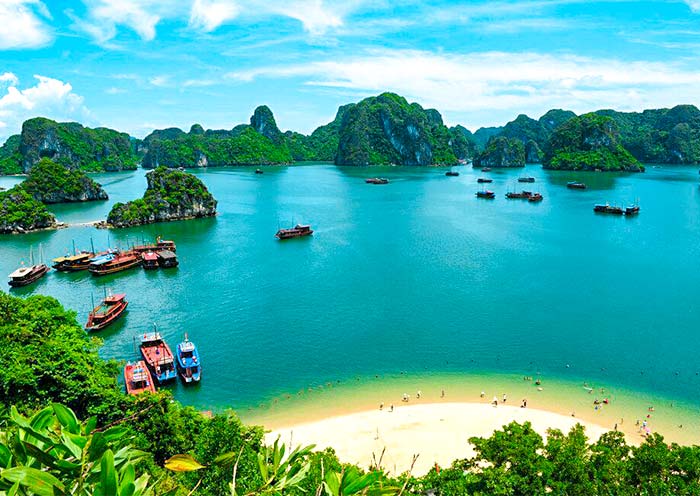
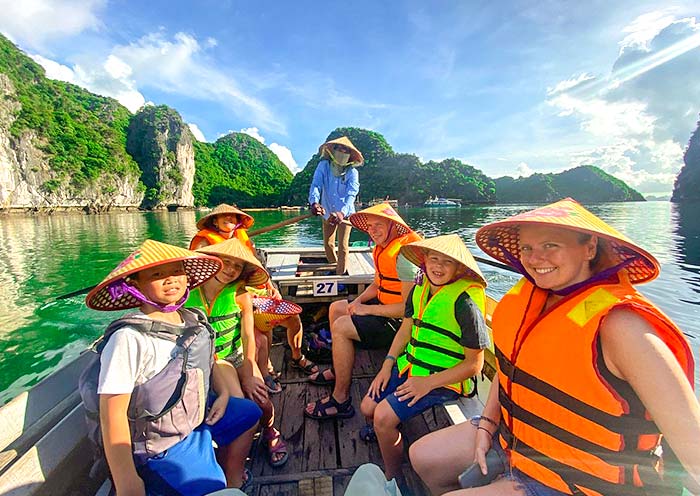

Early risers can embrace the sunrise with a Tai Chi class on the sundeck, invigorating your body and mind. Enjoy a delicious breakfast to onboard.
After breakfast, continue your exploration of Halong Bay! You can choose to participate in exciting water activities like kayaking or follow the cruise itinerary to admire the majestic limestone formations.
Later this morning, return to the cruise for a smooth check-out process at the reception. As you cruise back to the pier, savor a delightful lunch at 10:00 AM. Disembarkation will take place between 11:00 AM and 11:30 AM.
Following disembarkation, you'll be transferred back to Hanoi. Free time in Hanoi.
It is time to end your 9-day Thailand Vietnam tour.
Extension Ideas:
If you plan to continue exploring neighboring countries in Southeast Asia or Asia, such as Cambodia, Laos or China, don't hesitate to let us know. We can customize your itinerary and assist with travel arrangements.
Thank you for choosing Asia Odyssey Travel for your Asia tour, we are always here working for you and hope to see you again for your next trip to Asia. Safe journey!
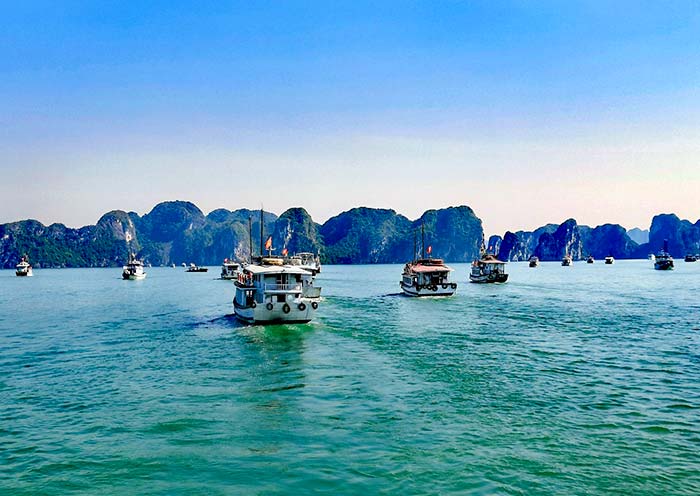

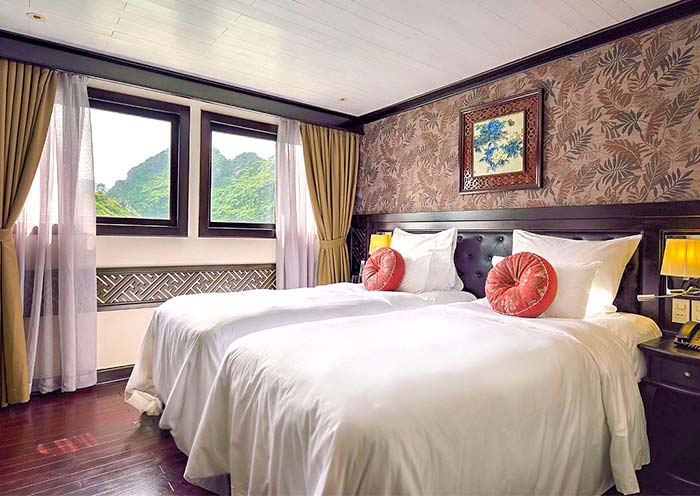
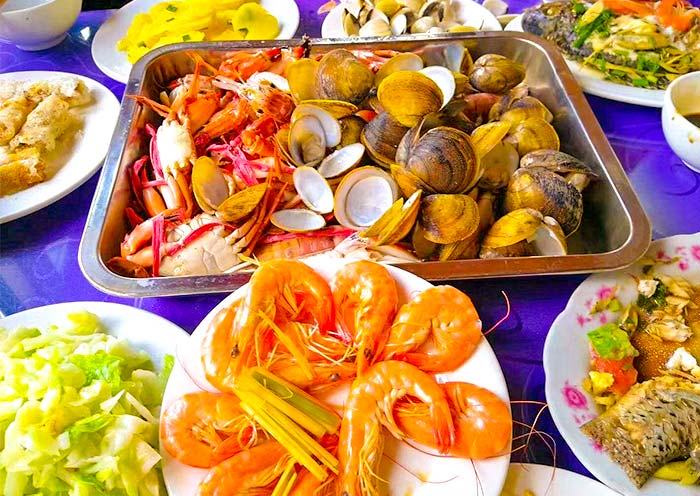
Price: What’s Included & What’s Excluded
What's Included:
What's Excluded:
Important Travel Tips for Visiting Southeast Asia
Visa requirements vary depending on your nationality and the length of your stay. It's important to check the specific requirements for each country you plan to visit well in advance of your trip. You can usually find this information on the embassy or consulate website of the country you're visiting.
Dry season (November to April): This is the peak tourist season for Southeast Asia as a whole, with the most consistent sunshine and comfortable temperatures. Ideal for beach lovers and those who want to avoid the rain. This is also a great time for trekking and other outdoor activities.
Average temperatures during Dry Season in Southeast Asia:
- Vietnam: 77°F - 86°F (25°C - 30°C): It can be slightly cooler in the northern mountains during December and January.
- Thailand: 82°F - 90°F (28°C - 32°C): Eastern and southern Thailand, including popular beach destinations, tend to be a few degrees warmer than the north.
- Laos: 75°F - 88°F (24°C - 31°C): Keep in mind that the mountainous areas of Laos can get chilly at night, especially in December and January.
- Cambodia: 84°F - 93°F (29°C - 34°C): Temperatures can get quite hot, especially from March to May, in Siem Reap (Angkor Wat).
The currency varies from country to country. In Vietnam, the currency is the Vietnamese đồng (VND). In Thailand, it's the Thai baht (THB). In Laos, it's the Lao kip (LAK). And in Cambodia, it's the Cambodian riel (KHR). However, US dollars are widely accepted in most tourist areas.
- Dress modestly: When visiting temples, pagodas, or other religious sites, it's important to dress modestly and respectfully. This means covering your shoulders and knees.
- Removing shoes: In many temples, it is customary to remove your shoes before entering. Look for a pile of shoes at the entrance as a cue to do the same.
- Bargaining: Bargaining is a common practice in Southeast Asia countries’ markets and street stalls. However, it's important to do so respectfully and with a friendly attitude. Remember that the aim is to reach a mutually agreed-upon price, not to aggressively drive the price down.
Looking for more travel guides about Southeast Asia countries? Want to gather additional information to plan your trip? Our team of professional travel experts has written over 100 articles about Vietnam Thailand Cambodia Laos. Please check out our Southeast Asia Travel Guide for inspiration and detailed insights.
Hotel Conditions for Your Southeast Asia Tour
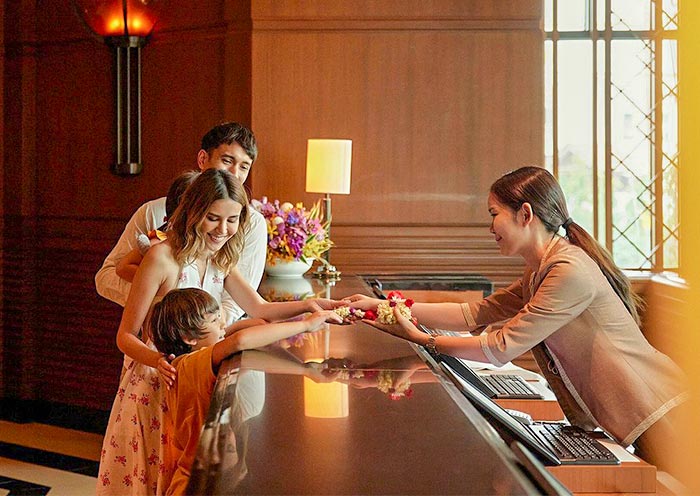

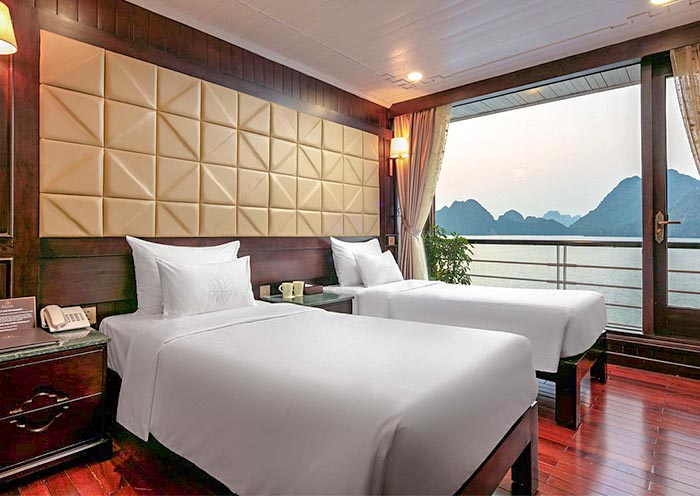
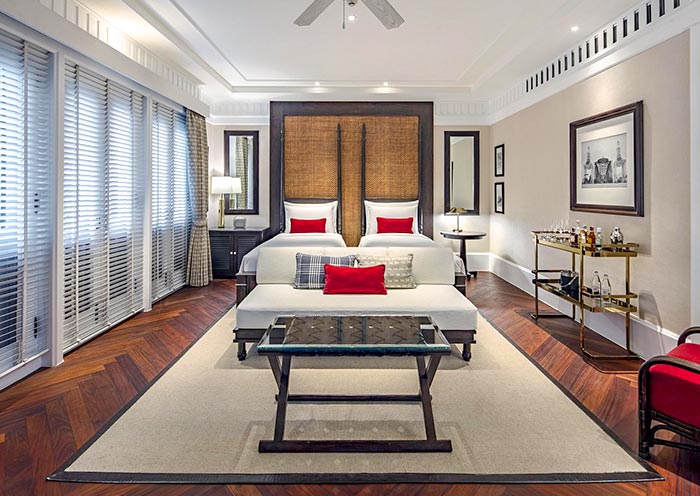
No matter whether you combine 2 or 3 countries, or visit all 4 countries in Southeast Asia, there are many different hotel styles and types to choose from. Travelers typically spend 7-9 nights in Vietnam, 6-9 nights in Thailand, and 2-3 nights each in Cambodia and Laos.
To cater to diverse traveler preferences and budgets, we offer a curated selection of accommodations. Our options include luxurious 5-star hotels, comfortable 4-star options, and economical 3-star establishments. All our selected hotels are conveniently located near city centers or popular tourist spots.
Find your perfect hotel for a great Southeast Asian experience! Our knowledgeable travel experts can provide you with various pricing options based on different hotels. Whether you seek a luxurious stay or have specific preferences, our experts will assist you in choosing the best option that suits your needs.
Photo Gallery for This Itinerary
Latest Southeast Asia Tours Reviews from Our Customers

Jan Woolley
USA
Date of Experience: Apr 26, 2024
Tour Customized by: Tony
You May be Interested in This Tour: Customized Tour

Emma
Singapore
Destination(s): Other
Date of Experience: Sep 14, 2023
Tour Customized by: Owen
You May be Interested in This Tour: Customized Tour

Arizona
Australia
Destination(s): Other
Date of Experience: Sep 04, 2023
Tour Customized by: Teresa
You May be Interested in This Tour: Customized Tour
Price: request
(Based on a private tour for two people. Price varies depending on program, travel date, number of people.)
Free Enquiry! You don’t need to pay for the reservation.
- United States (+1)
- Australia (+61)
- Singapore (+65)
- Malaysia (+60)
- Philippines (+63)
- Canada (+1)
- Italy (+39)
- Indonesia (+62)
- United Kingdom (+44)
- Spain (+34)
- Mexico (+52)
- Hong Kong (+852)
- Thailand (+66)
- United Arab Emirates (+971)
- New Zealand (+64)
- South Africa (+27)
- Germany (+49)
- Brazil (+55)
- India (+91)
- France (+33)
- Vietnam (+84)
- The Netherlands (+31)
- Saudi Arabia (+966)
- Ireland (+353)
- Argentina (+54)
- Switzerland (+41)
- Romania (+40)
- Pakistan (+92)
- Japan (+81)
- Portugal (+351)
- Bangladesh (+880)
- South Korea (+82)
- Puerto Rico (+1)
- Türkiye (+90)
- China (+86)
- Belgium (+32)
- Qatar (+974)
- Greece (+30)
- Taiwan (+886)
- Austria (+43)
- Poland (+48)
- Israel (+972)
- Chile (+56)
- Sri Lanka (+94)
- Nigeria (+234)
- Peru (+51)
- Colombia (+57)
- Hungary (+36)
- Nepal (+977)
- Denmark (+45)
- Bulgaria (+359)
- Norway (+47)
- Slovenia (+383)
- Sweden (+46)
- Kuwait (+965)
- Costa Rica (+506)
- Ecuador (+593)
- Venezuela (+58)
- Malta (+356)
- Croatia (+385)
- Tunisia (+216)
- Czechia (+420)
- Mongolia (+976)
- Bahrain (+973)
- Mauritius (+230)
- Papua New Guinea (+675)
- Cambodia (+855)
- Dominican Republic (+1)
- Luxembourg (+352)
- Finland (+358)
- Guatemala (+502)
- Myanmar (+95)
- Maldives (+960)
- Slovakia (+421)
- Laos (+856)
- Serbia (+381)
- Brunei (+673)
- Oman (+968)
- Macao (+853)
- Panama (+507)
- Morocco (+212)
- Jordan (+962)
- Georgia (+995)
- Fiji (+679)
- Bolivia (+591)
- Lithuania (+370)
- Bahamas (+1)
- Cyprus (+357)
- Latvia (+371)
- Bhutan (+975)
- Iraq (+964)
- Iran (+98)
- Kenya (+254)
- Jamaica (+1)
- Zimbabwe (+263)
- Azerbaijan (+994)
- Uruguay (+598)
- Estonia (+372)
- Andorra (+376)
- Cameroon (+237)
- Ghana (+233)
- Kazakhstan (+7)
- Nicaragua (+505)
- Egypt (+20)
- Russia (+7)
- Albania (+355)
- Réunion (+262)
- Montenegro (+382)
- Algeria (+213)
- Afghanistan (+93)
- Martinique (+596)
- Uganda (+256)
- Honduras (+504)
- North Macedonia (+389)
- Trinidad and Tobago (+1)
- Suriname (+597)
- Antigua and Barbuda (+1)
- Zambia (+260)
- Ukraine (+380)
- Armenia (+374)
- Barbados (+1)
- Belarus (+375)
- Palestine (+970)
- Lesotho (+266)
- Moldova (+373)
- Ethiopia (+251)
- French Polynesia (+689)
- Gambia (+220)
- Guam (+1)
- Gibraltar (+350)
- Isle of Man (+44)
- New Caledonia (+687)
- El Salvador (+503)
- Comoros (+269)
- Seychelles (+248)
- Chad (+235)
- Samoa (+685)
- Cook Islands (+682)
- Palau (+680)
- Paraguay (+595)
- DR Congo (+243)
- Solomon Islands (+677)

